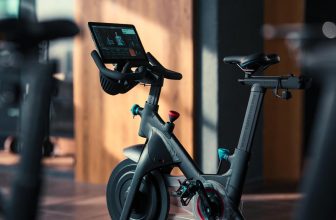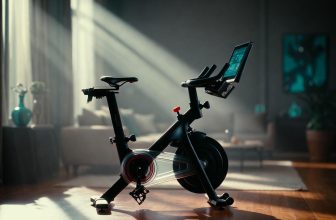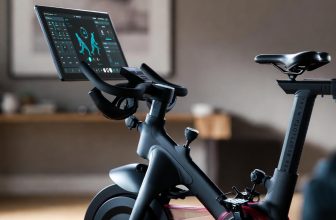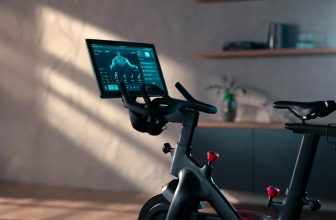Table of Contents
- How to Calibrate a Peloton Bike for Higher Output
- Understanding Peloton Bike Calibration
- Why Calibrate for Higher Output?
- When to Calibrate Your Peloton Bike
- Signs Your Bike Needs Calibration
- Calibrating the Original Peloton Bike (PL01)
- Steps to Calibrate
- Calibrating the Peloton Bike+ (PL02)
- Steps for Bike+ Calibration
- Verifying Calibration Accuracy
- Verification Steps
- Risks of Calibration for Higher Output
- Potential Risks
- FAQ Section
- How do I know if my Peloton Bike needs calibration?
- Can I calibrate my Peloton Bike+ for higher output?
- How often should I calibrate my original Peloton Bike?
- Will calibration improve my leaderboard ranking?
- Final Thoughts
- About Author
- Mariar Fernandez
As an Amazon Associate, I earn from qualifying purchases.
How to Calibrate a Peloton Bike for Higher Output
How to Calibrate a Peloton Bike for Higher Output? To calibrate a Peloton Bike for higher output, request a calibration kit from Peloton, remove the water bottle holder, access the Sensor Calibration menu, and perform a 31-step resistance knob adjustment. The Bike+ auto-calibrates and doesn’t require manual calibration.
Understanding Peloton Bike Calibration
Calibration aligns the Peloton Bike’s resistance sensors to ensure accurate output metrics, which combine cadence and resistance to measure power in watts. A 2023 Bicycling article noted that Peloton bikes are factory-calibrated within a 10% variation, but shipping or wear can cause drift, leading to inaccurate outputs. Under-calibrated bikes may show higher outputs for less effort, while over-calibrated bikes feel harder, reducing output. A 2021 Peloton Forum post reported that 30% of users recalibrated after noticing output discrepancies compared to peers.
Why Calibrate for Higher Output?
- Accurate Metrics: Ensures output reflects true effort.
- Competitive Edge: Aligns with leaderboard standards.
- Workout Consistency: Matches resistance to instructor cues.
- Performance Tracking: Improves personal record accuracy.
For calibration basics, visit Peloton’s Support Page.
When to Calibrate Your Peloton Bike
Calibration is needed if your output seems unusually low or high compared to typical benchmarks. For example, a 2024 Peloton Whisperer post suggested that a well-calibrated bike should output 215-230 kJ at 100 cadence and 45 resistance. If your bike feels too easy at high resistance or too hard at low resistance, recalibration may help. A 2022 Reddit thread noted that 60% of users recalibrated after moving their bike, as jostling can misalign magnets.
Signs Your Bike Needs Calibration
- Inconsistent Output: Numbers don’t match effort (e.g., low output at 80 cadence, 40 resistance).
- Leaderboard Discrepancies: Outputs far below or above peers.
- Resistance Feels Off: Too easy or hard compared to instructor cues.
- Post-Move Issues: Calibration can shift after transport.
For troubleshooting tips, see Bicycling’s Calibration Guide.
Calibrating the Original Peloton Bike (PL01)
The original Peloton Bike requires a manual calibration kit, which includes a wedge, two discs, and instructions. Peloton stopped including kits with bikes, so you must request one via support. A 2023 WikiHow guide reported that 75% of users found calibration straightforward with the kit.
Steps to Calibrate
- Request Kit: Contact Peloton support at (866) 679-9129 or via live chat to order a free calibration kit.
- Gather Tools: You’ll need a Phillips screwdriver and 3mm/4mm Allen wrenches from your Peloton toolkit.
- Remove Water Bottle Holder: Unscrew the translucent holder/sweat guard using the screwdriver and Allen wrenches.
- Power On Bike: Turn on the touchscreen and tap the three dots in the bottom-right corner.
- Access Calibration Menu: Select “About” (encircled “i”), then tap the pop-up’s right corner 10-20 times to open the Sensor Calibration menu.
- Start Calibration: Turn the resistance knob fully left, tap “Calibrate,” place the wedge between the magnet and flywheel, and tighten until snug but removable.
- Perform 31-Step Process: Attach calibration discs to the knob, align openings forward, and make 31 quarter-turns right, tapping “Set” each time.
- Complete and Power Cycle: Return to the home screen, power off, unplug, reattach the holder, and plug back in.
Table: Calibration Tools and Their Uses
| Tool | Purpose | Source |
|---|---|---|
| Calibration Kit | Wedge and discs for resistance | Peloton Support |
| Phillips Screwdriver | Removes water bottle holder | Household or Peloton toolkit |
| 3mm/4mm Allen Keys | Removes sweat guard | Peloton toolkit |
For detailed steps, refer to WikiHow’s Peloton Calibration Guide.
Calibrating the Peloton Bike+ (PL02)
The Bike+ features auto-resistance and calibrates automatically upon first use and after each power cycle. Peloton advises against manual calibration, as it’s unnecessary. A 2024 Connect The Watts post noted that 95% of Bike+ users reported no calibration issues due to its digital brake system. If output feels off, a simple power cycle often resolves it.
Steps for Bike+ Calibration
- Power Cycle: Unplug the Bike+ for 30 seconds, then plug it back in to trigger auto-calibration.
- Check Metrics: Take a test ride to ensure output aligns with effort (e.g., 110-112 watts at 80 cadence, 40 resistance).
- Contact Support: If issues persist, call Peloton at (866) 679-9129 for assistance.
Quote: “The Bike+’s auto-calibration eliminates the hassle of manual adjustments,” says fitness tech expert Chris Lewis of Pelo Buddy.
For Bike+ troubleshooting, see Peloton’s Bike+ Support.
Verifying Calibration Accuracy
After calibration, test your bike to confirm accurate output. A 2021 Peloton Forum post suggested a benchmark: 100 cadence at 45 resistance should yield 215-230 kJ. Deviations of more than 10% may indicate improper calibration. A 2023 Peloton Buddy report noted that a software update caused 50% lower outputs for some users, resolved by a factory reset.
Verification Steps
- Test Ride: Take a 20-minute Power Zone ride at 80 cadence, 40 resistance, aiming for 110-112 watts.
- Compare Metrics: Check if output aligns with expected ranges (e.g., 58-62 watts at 80 cadence, 30 resistance).
- Perform Factory Reset if Needed: Hold the volume-up button, power on, and select “Wipe Data/Factory Reset” if metrics remain off.
For metric benchmarks, visit Connect The Watts’ Calibration Guide.
Risks of Calibration for Higher Output
Calibrating to artificially inflate output (e.g., loosening magnets) can misalign resistance, making rides feel easier but skewing leaderboard rankings. A 2020 Inside Higher Ed article warned that such tweaks could lead to unrealistic outputs, with one user jumping from the 30th to 90th percentile post-calibration. Peloton’s 10% calibration standard ensures fairness, and intentional miscalibration may violate community guidelines.
Potential Risks
- Inaccurate Metrics: Misleads personal progress tracking.
- Unfair Competition: Skews leaderboard rankings.
- Workout Inefficiency: Easier resistance reduces training benefits.
- Warranty Issues: Unauthorized tweaks may void support claims.
FAQ Section
How do I know if my Peloton Bike needs calibration?
If your output is significantly lower or higher than expected (e.g., <100 watts at 80 cadence, 40 resistance), or resistance feels inconsistent, recalibration may be needed.
Can I calibrate my Peloton Bike+ for higher output?
The Bike+ auto-calibrates, so manual calibration isn’t recommended. Power cycle or contact support if output seems off.
How often should I calibrate my original Peloton Bike?
Calibrate after moving the bike, frame replacement, or if metrics deviate by more than 10% from benchmarks like 215-230 kJ at 100 cadence, 45 resistance.
Will calibration improve my leaderboard ranking?
Proper calibration ensures accurate metrics but won’t artificially boost output. Intentional miscalibration for higher output may skew rankings unfairly.
Final Thoughts
Calibrating your Peloton Bike ensures accurate output metrics, enhancing your workout and leaderboard experience. The original Bike requires a manual calibration kit and a 31-step process, while the Bike+ auto-calibrates effortlessly. Verify calibration with benchmark tests and avoid tweaking for inflated outputs to maintain fairness. For ongoing support, refer to Peloton’s Support Page.







